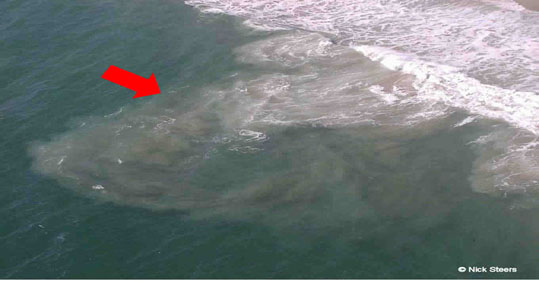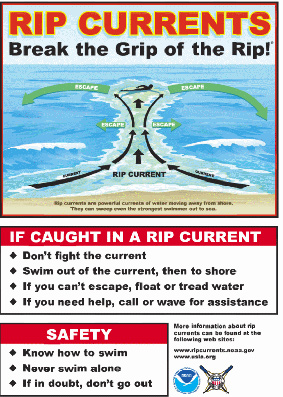|
A Warning About Rip Currents
Rip currents are the leading hazard for all beach-goers (right behind sunburn/heat exhaustion). You don't have to be a weak swimmer to be effected by them either. Over 100 drownings due to this unassuming danger, occur every year in the United States. They can be found on many outer Cape Cod beaches every day. Under most tide and sea conditions the speeds are pretty slow. However, when the conditions are right, the speeds can quickly increase to become dangerous to anyone entering the water. The strength and speed will likely increase as wave height and wave period increase. The most dangerous time is during high surf conditions as the wave height and wave period increase. These currents typically form at low spots or breaks in sandbars, and also near structures such as jetties and piers. They can be very narrow or extend in widths to hundreds of yards. The outwards pull also varies. Sometimes the current ends just beyond the line of breaking waves, but sometimes they can continue to push hundreds of yards offshore.
How To Spot A Rip CurrentNone, one, or more of the above clues may indicate the presence of these dangerous currents. They are often not readily or easily identifiable to the average vacationer.
How to Avoid and Survive Rip Currents:Obey all instructions and orders from lifeguards. By far, the most important thing to remember is NOT TO PANIC! The vast majority or drownings occur because of panic.
Return To Cape Cod Beaches From Rip Currents Page
|


